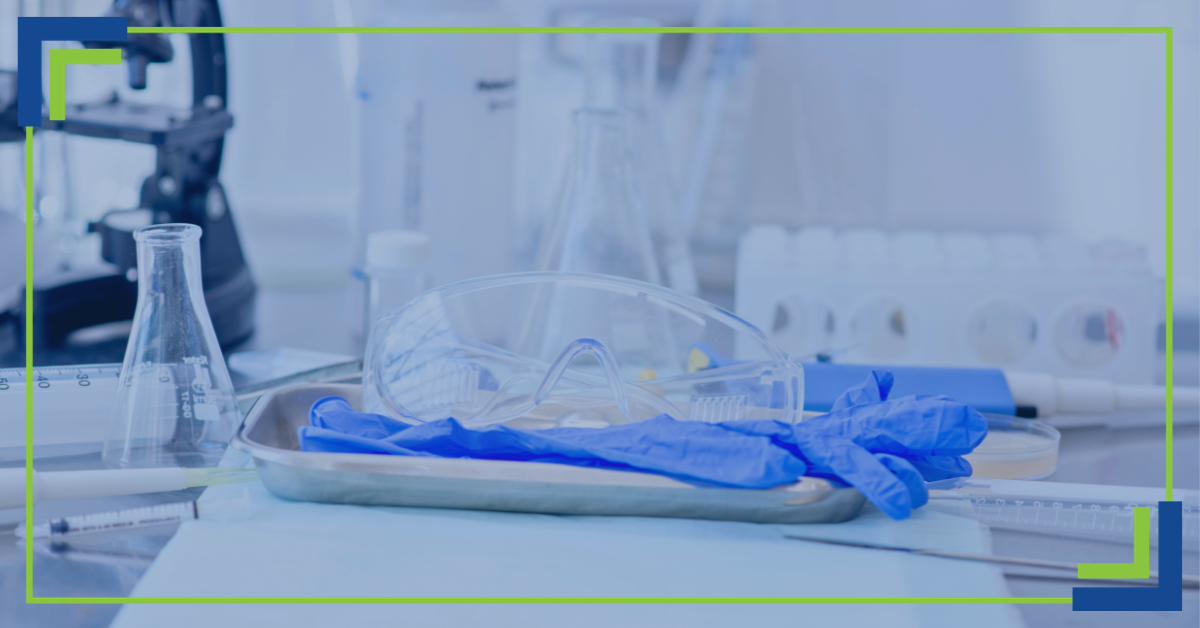
Safety is paramount in any laboratory setting, and understanding the potential risks involved is crucial. In this blog, we’ll highlight the ten essential pieces of equipment you should always have.
Lab Coats
These shield you from chemical spills and splashes, protecting your clothing and skin. Donning a lab coat reduces the risk of contamination and personal injury.
Safety Goggles
The importance of safeguarding your vision can’t be overstated. These goggles protect your eyes from potential injuries during experiments involving chemicals or other hazards.
Gloves
These prevent your hands from coming into contact with harmful substances. Wearing the right type of gloves for your specific laboratory tasks protects your skin. This is essential for your personal safety and contamination control.
Emergency Shower and Eyewash Station
In the event of a chemical spill or an eye exposure incident, it’s vital to have quick access to emergency showers and eyewash stations. Your skin and eyes are delicate, and even a few seconds of delay can result in a serious injury. Emergency showers and eyewash stations allow users to wash away hazardous materials, providing immediate decontamination.
Fire Extinguisher
A suitable fire extinguisher is a must-have in any lab to address potential fire hazards. First, It’s important to understand that not all fire extinguishers work the same way on all flames. Next, be sure you know how to use it effectively. Remember the acronym PASS which stands for:
- Pull the pin
- Aim
- Squeeze
- Sweep
Watch this video to see how to select and properly use the correct fire extinguisher.
Fume Hood
A fume hood is a ventilated enclosure designed to safely handle and contain potentially hazardous fumes, chemicals, or particulates. It’s equipped with an exhaust system that vents air away from the lab’s work areas. This protects users and the surrounding environment from exposure to harmful substances.
First Aid Kit
Every lab needs a fully-stocked first aid kit to care for minor injuries promptly. Make sure it has:
- Medical gloves
- Bandages, sterile pads, and adhesive tape
- Scissors
- Antiseptic cream
- Breathing barrier
- Burn dressings
- Instant ice pack
- Eye patch
- Hand sanitizer
Be sure to regularly check and replenish the kit’s contents so it’s fully stocked and ready when needed.
Spill Kits
Accidents happen, and chemical spills can occur. Having spill kits on hand makes it possible to quickly clean up after such incidents, minimizing risks and overall environmental impact. Designed to soak up liquids, according to Iowa State University, these kits should contain:
- A copy of the Spill Cleanup Protocol
- Nitrile disposable gloves (8 mil)
- Lab coat(s)
- Safety goggles
- N95 dust mask respirator(s)
- Disposable shoe covers (booties)
- Absorbent material, such as absorbent paper towels, granular absorbent material, etc.
- All-purpose disinfectants, such as normal household bleach (diluted 1:10) or an iodophor
- Bucket for diluting disinfectant (this can be used to store the kit contents when not in use)
- Tongs and/or forceps, and/ or dustpan and hand broom or squeegee, etc. (for picking up broken glass or other contaminated sharps)
- Sharps waste container(s)
- Autoclavable biohazard waste bags
- Biohazardous spill warning signs (“Biohazard Spill Kit”).
Ventilation System
Your lab needs to have an effective ventilation system. This maintains air quality and reduces exposure to harmful substances. It plays a key role in removing fumes and providing a safe breathing environment.
Safety Signs
Posting clear safety signs communicates potential hazards and guidelines effectively. They promote awareness and adherence to safety protocols, helping everyone work more safely.
Staying Safe
Prioritizing safety in your laboratory is non-negotiable. With these ten essential pieces of lab safety equipment, you can create a secure environment for yourself and your colleagues. Remember, safety should always come first in the lab. For more information, reach out to BaneBio today.
Works Cited
Biohazard Spill Kit. Iowas State University Environmental Health and Safety. Retrieved November 10, 2023, from https://www.ehs.iastate.edu/research/biological/microbial/spill-cleanup/biohazard-spill-kit

